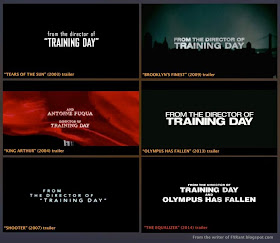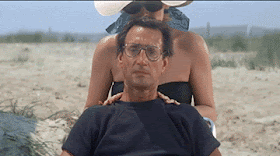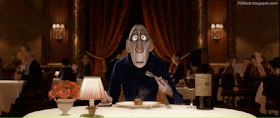GLADIATOR, VFX Oscar Winner (and Best Picture nominee)
To newcomers: The VFX Predictinator is a formula my wife and I developed that correctly predicts the winner of the visual effects Academy Award. Here’s last year’s Predictinator article, in which we predicted “Gravity” to win the visual effects Oscar, and here is a primer, written by Cinefex.
Now that awards season is upon us, I feel it’s a good time to address an issue some FXRant readers and Twitter followers have pointed out over the past few years, concerning The VFX Predictinator: the strong correlation between the winner of the visual effects Academy Award and a specific piece of criteria that is not a factor in the Predictinator formula.
For the past six years (2008 to 2013) the winner of the visual effects Oscar was also nominated for Best Picture. Many have jumped to the conclusion that this, in and of itself, is a mini-Predictinator. Unfortunately, one cannot jump to the conclusion that a vfx film with a Best Picture nomination is a lock for a Best Visual Effects win. The historical data indicates that this piece of criteria is an indicator of potential victory, not a predictor of victory. Let’s dive into the data.
The VFX Oscar winning film was also nominated for Best Picture for the last six straight years. But in 2009, two films with VFX nominations also earned Best Picture nominations, “Avatar” and “District 9”. Then, for the four years before 2008, a grand total of zero visual effects nominees also earned a Best Picture nomination.
From 1994 to 2003, only 7 out of 10 years saw a visual effects nominee also earn a Best Picture nomination. Going back to 1989 (the first year of our Predictinator data), one sees another five year stretch of no visual effects films with Best Picture nominations.
With 25 years of data, only 13 years saw at least one visual effects nominee earn a Best Picture nomination. In those 13 years, a visual effects film that also was a Best Picture nominee won all 13 times. That’s pretty solid data (as long as you ignore the fact that 3 out of 13 years had *two* visual effects nominees with Best Picture nominations. How does one predict the winner in those cases?).
The data also shows that 12 out of 25 years, (the years without a Best Picture nominee) you cannot make any educated prediction using this criteria alone.
TITANIC, VFX Oscar Winner (and Best Picture nominee)
So, speaking as generously as possible, here’s the best mini-Predictinator statement one can make, for years 1985-2013:
The winner of the VFX Academy Award is a movie that also earned a Best Picture nomination, unless:
- ...more than one film is also nominated for Best Picture
- ...no visual effects films are nominated for Best Picture
The strength behind this indicator is, in general terms, ‘prestigious acclaim’, for which The VFX Predictinator accounts in two key ways: critical acclaim (as quantified by the film’s Tomatometer score) and additional Academy Award nominations. In each case, the stronger ‘prestigious acclaim’ a film earns, the stronger chance it has for winning the visual effects Oscar.
If a visual effects nominee is also a Best Picture nominee, it means that the film already has built-in prestigious acclaim and probably earned a slew of additional Oscar nominations and has a strong Tomatometer rating, unlike its competition. This is what lifts that film’s Predictinator score above its competitors, typically action/sci-fi franchise films that underwhelm critics and are frequently ignored by Academy voters.
HUGO, VFX Oscar Winner (and Best Picture nominee)
In 2010, in an attempt to expand the variety of films the Academy endorses with its nominations, the Best Picture category was significantly expanded from a maximum of five nominees to (up to) ten nominees. Ironically, as reported by Grantland’s Mark Harris, the total number of films nominated by the Academy has actually shrunk. As Harris says, this is a “deeply disappointing trend”. Go read the article; it’s fascinating.
On the positive side, it has been a boon for this indicator (and for The Predictinator itself). The expanded Best Picture category helps shine a light on visual effects films that have the general momentum of an ‘award winner’. If the Best Picture category still had only five nominees, do you think films like “Inception”, “Hugo”, and “Gravity” would have earned Best Picture nominations? Probably not.
These visual effects films that also earn Best Picture nominations merely highlight and confirm The Predictinator’s ‘critical acclaim’ and ‘additional Oscar nominations’ criteria, which can clinch a visual effects Oscar win.
The nominations for the 87th Academy Awards will be announced on January 15, 2015. Once they are announced, I will run the The VFX Predictinator and announce which visual effects nominee is predicted to win the Oscar.






































